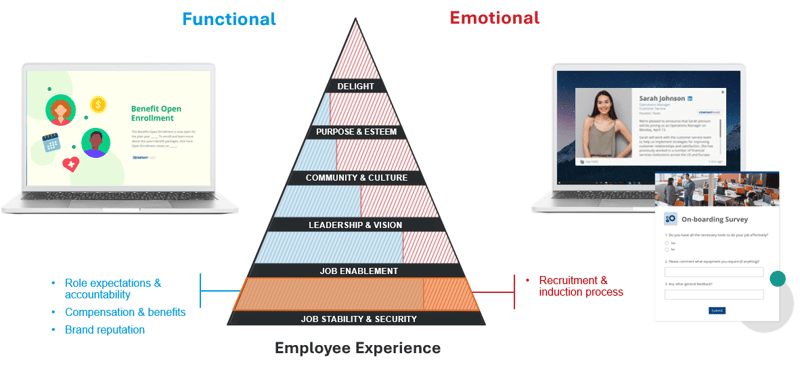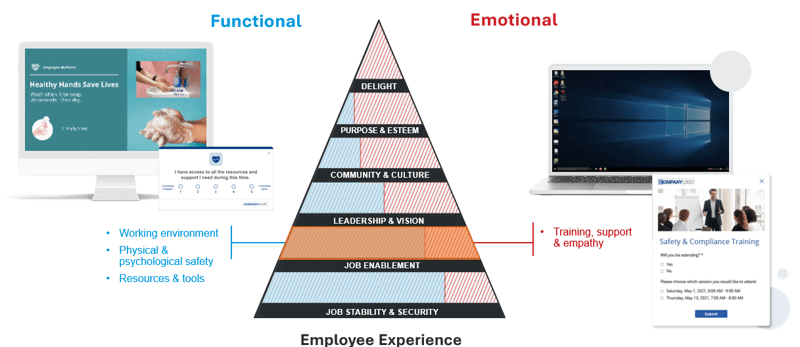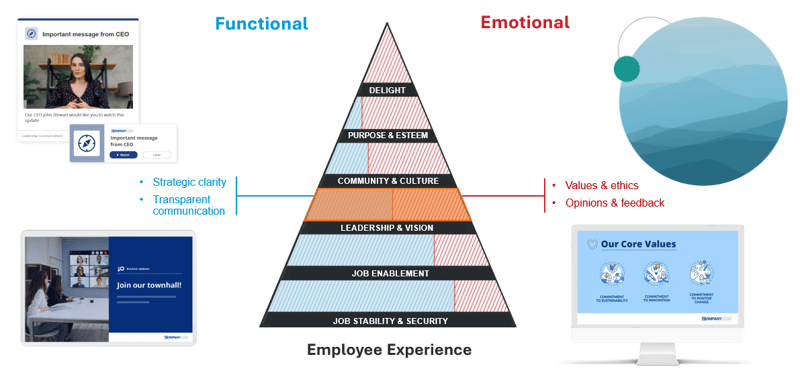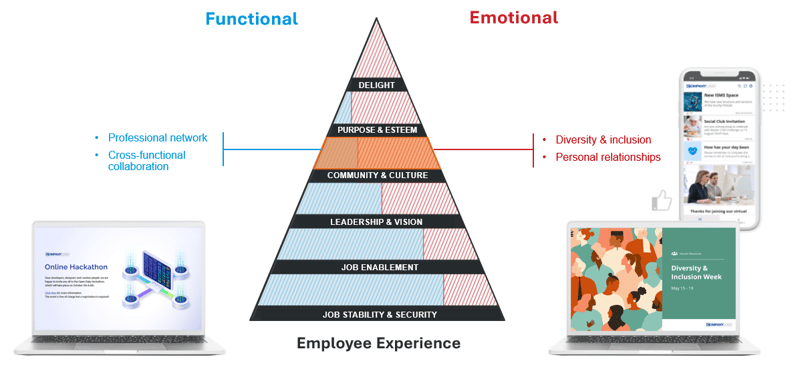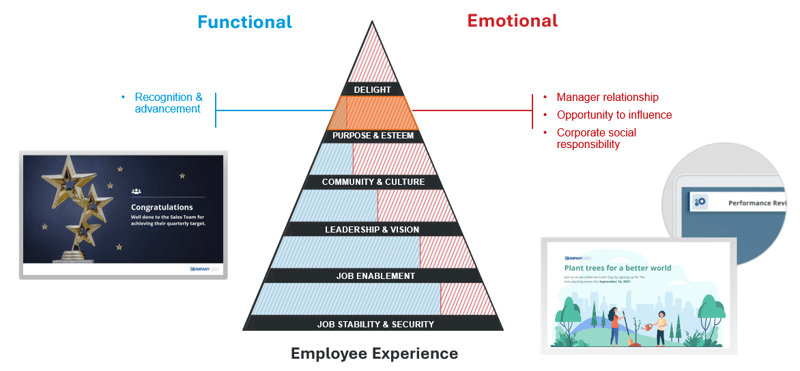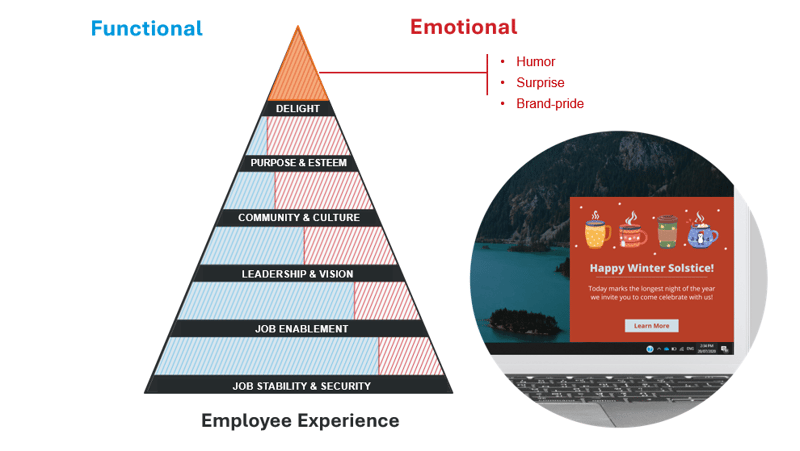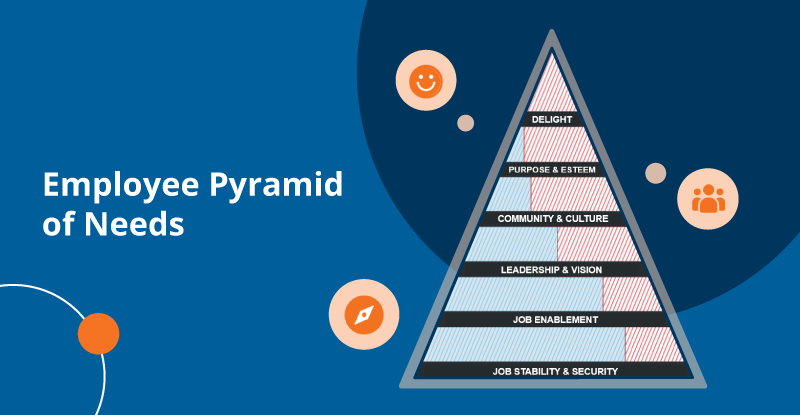
Disengaged workers are leaving their jobs faster than ever, and engagement, not pay or perks, is the main reason why. Employee engagement is tougher than ever for businesses, according to the Gallup State of the Global Workplace 2021 Report.
Employees are burnt out from working at home and are feeling isolated from their professional and personal communities. 75% of disengaged workers are actively looking for new work.
Running a business and retaining talent is a difficult balance for employers. When recruiting a new employee costs $4000, plus all the hidden costs to administration and productivity, that’s expenses and effort HR Managers don’t want.

(Source: Gallup)
Building a strong employee experience (EX) helps organizations retain staff and motivates employees to perform. Richard Branson famously said, “Clients do not come first. Employees come first. If you take care of your employees, they will take care of the clients.”
SnapComms commissioned employee experience research into the value, impact and trends of EX. Based on these insights, we developed the Employee Pyramid of Needs – an employee experience framework capturing everything needed to create and maintain positive EX.
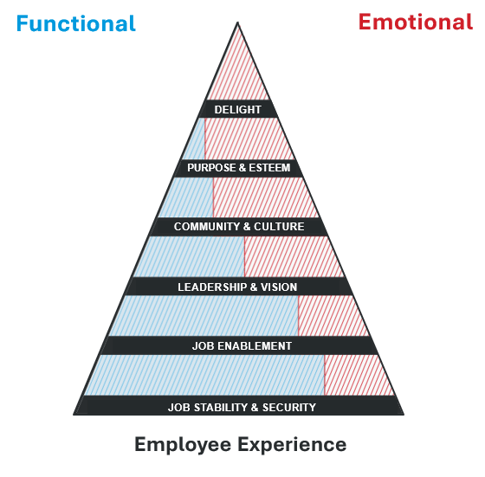
6 Levels of Employee Experience
Our survey of more than 200 US-based Human Resources professionals revealed how employee communications changed over the lengthy COVID disruption. Organizations flexed from functional to emotional messaging.
Initially, functional messaging around job enablement and COVID-related information was the norm. But when employers saw increasing disengagement and burnout, they switched to more emotional messaging around purpose and culture to increase connectivity.
Insights from our survey were mapped to a unique Employee Pyramid of Needs. This is designed to help employers ensure they place sufficient focus on all areas and can prioritize them in their company core values.
Each of the 6 levels in the pyramid, from the bottom level to the top (in order of importance), addresses functional as well as emotional considerations – functional on the left, emotional on the right. Specific examples and related messaging are shown on each side for every level.
Below we look at each, in turn, examining why they matter to employees and how they can be addressed by employers and HR teams.
Level 1. Job Stability and Security
The bottom level of the pyramid is Job Stability and Security, the foundation for all levels above it. Without a clear, strong, and believable footing upon which to build their experience with the organization, employees are much less likely to invest discretionary effort and commit to shared success.
This level includes clarity around role scope, employee responsibilities, and company strength. At this level of the pyramid, employee needs are primarily functional.
HR communications should focus on functional aspects of the job, such as role expectations, benefit updates, and brand reputation.
Emotional aspects to be addressed include the quality of recruitment and onboarding communications, all of which provide the sense of stability essential at this stage of the employee life cycle.
Level 2. Job Enablement
With fundamental needs addressed around the purpose and scope of their role, the next level builds upon this to ensure employees have what they need to perform – and excel. If the bottom level gives employees the purpose to perform, this level arms them with the tools.
Job Enablement equips, trains, and supports employees to work effectively and safely. While functional needs still predominate, emotional considerations are beginning to play a larger part.
On the Functional side, employers should focus on equipping people to work effectively with messaging around resources, the working environment, and safety practices.
Communications to address emotional needs would cover training, emotional support, and empathy.
Level 3. Leadership and Vision
Without direction, guidance, and motivation, even the best-equipped employees will fail to achieve their potential. Leaders provide this. They must create a culture where employees are energized by the organization’s mission and inspired by leadership’s personal stance.
The Leadership and Vision level is about employees’ connection with decision-makers and alignment of personal and company values. This is a crucial area of need which influences whether employees merely carry out their job, or if they excel at it.
Functional and emotional needs are equally weighted at this level of the pyramid. The functional side concerns leadership communications with strategic clarity, visibility, and transparency.
On the emotional side, it’s about the alignment with the firm’s values and ethics, and the openness to employee opinions and feedback.
Level 4. Community and Culture
The Gallup report revealed that 14% of employees felt they weren’t treated with respect at work. Lack of respect in the workplace correlated highly with employee perceptions of discrimination or harassment. This is clearly detrimental to a positive EX.
The Community and Culture level concerns belonging, unity, and camaraderie, both within teams and across the company. From this level, emotional needs assume more influence on EX than functional needs.
The functional component concerns enabling the creation of an employee’s professional network, as well as providing opportunities for cross-functional collaboration.
The emotional side focuses on making culture synonymous with humanity and enabling diversity and inclusion, as well as the development of trusted personal relationships.
Level 5. Job Purpose and Esteem
From this level, employee needs are increasingly inward-focused. While they may know how their role contributes to the organization, and they possess the skills and support to carry it out, the highest performers also have a strong sense of their positive self-worth.
Job Purpose and Esteem encapsulate recognition of achievements and contributions towards the wider social picture. It’s especially important to Millennial and Generation Z workers, for whom connection on a deeper personal level inspires increased participation and involvement.
The functional side of this level deals with a consistent focus on recognition, enabling growth and advancement.
On the emotional side, focus on enabling opportunities for individuals to have a voice and influence decisions. It’s about corporate social responsibility, and about the all-important focus on healthy manager/employee relationships.
Level 6. Delight
Negative emotions like worry, stress, anger, and sadness reached record levels among employees across the world in 2020. Gallup found that roughly seven in 10 employees are struggling or suffering, rather than thriving, in their overall lives.
The uppermost level of the pyramid is wholly concerned with levity, humility, and the unexpected ‘wow’ moments that enrich working. Delight is the pinnacle of every level which has come before it – and is where staff are transformed into superstars.
Employee needs at this level are solely emotional. It’s communications that contribute humor, magic, surprise, and brand pride. The secret sauce that adds the sparkle and the smile.
 Communications and employee experience are inextricably linked. Communications are the single biggest influence on both positive and negative employee experience.
Communications and employee experience are inextricably linked. Communications are the single biggest influence on both positive and negative employee experience.
Our exclusive EX whitepaper provides you with the full story, all the research results and dozens more practical tips and examples. Download your copy now.
Download: 6-Part Framework to Improve Employee Experience
